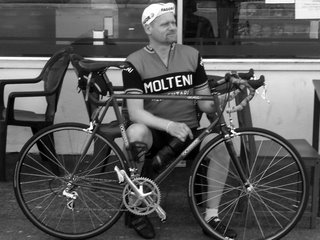A question that has been pursuing me as of late is, What difference might the “humanities” make in a college education in the U.S. in the 21st century. A narrower version of this question that is of interest to me goes like this: What is it that the humanities contribute to a Cascadia Community College education? I suppose my interest is driven in part by a literature teacher’s fear of being irrelevant. My work in a college that assesses itself is a more significant driver, at least in the present. I began asking these questions with more urgency after Cascadia (the college where I teach the humanities) began to take up program review eighteen months ago and my colleagues needed to wonder about what learning in the humanities might look like. If learning happens in the humanities, then I need to be able to argue with some confidence that the study of literature (my bag in the humanities) will alter learners’ practice of being human and enable them better to pursue “important social ends” (a phrase of Lee Shulman’s that I am taken with). Making this argument seems both attractive and harder than I thought it would be. The argument turns out to be very personal. Between 1981 and 1994, I worked my way to three degrees in English. I studied the humanities because I loved the courses and (for the most part) the people who taught them. Despite the fact that I was moved enough by literature and drama, music and architecture to forego more lucrative and, much of the time, comprehensible interests, I have never written for myself an apology. I have long offered to my students various arguments about the value of the courses we are beginning; those arguments may even be valid and compelling. But I have never integrated such an argument to the point that I might offer it to the parents of one of my students (or to group of my students who are themselves parents).
So here goes. I’ll start from the boilerplate that describes the humanities and associated learning outcomes at Cascadia:
Languages, literature, the arts and philosophy are essential cultural expressions of being human. Underlying these subjects are ideas such as aesthetics, ethics, symbolism and creativity that vary across times and cultures. Through the humanities, learners participate in others’ subjective experience of reality and convey their own.
- Learn: Learners will gain knowledge of the core content of at least two humanities disciplines and of methods of analysis, synthesis, and evaluation.
- Think: Learners will analyze and evaluate humanities content, drawing conclusions about the form and impact of human artifacts.
- Communicate: Learners will discover and use a creative process to communicate understandings of human experience through visual, musical, dramatic, oral, or written products.
- Interact: Learners will investigate the context and language of the human experience to examine and explore their everyday worlds and to expand their experience and under- standing of other cultures and times.
I have to admit that I like the last sentence of our summary: “learners participate in others’ subjective experience of reality and convey their own.” We are suggesting that one studies the humanities to practice listening to the way that others have represented experience and to speak richly about those representations in ways that are honest to one’s experience.
So what would I watch, say, a lit student doing in order to know where they are in achieving such an outcome? I would want to see her talk about literary texts as historical forms but as a person who is consuming those texts (and not some disembodied expert). I would also want to see her respond to another person talking about a literary artifact. It might be that just the latter would do. If a learner considered a response to a text and explained how that other presented an artifact as an aesthetic form and how that other’s response builds for her a more complete understanding. This “talk” could be delivered in a variety of media (from a book club performance to a conference talk to a website to a podcast to a conventional essay). This “talk” might be aimed at a variety of identified audiences and assessed for its effectiveness.
This sort of performance might integrate (for me and my students) our purpose in studying literature or drama. Our aim would be the ability to talk richly (with creativity and sensitivity) about artifacts that make humans identifiably human. We would aim at understanding hard, theoretical analysis but also at identifying honest responses to aesthetic forms. Rather than taking the experts as the last word, we would aim at being able to listen to the experts so that our own responses become both more expert and also more open to alternative understanding.
Should college take up this aim with an entire course distribution area (15-20% of a degree)? The question becomes easier to answer after this thought experiment. Our students need to learn how to read expert literature and grapple with artifacts that don’t yield an obvious interpretation (think of designing an ad or trying to repair the HVAC system in a hospital). They need to be able to listen generously to other’s ideas and report back those ideas with accuracy and honesty but also go beyond what others say to new solutions. They need to be able to settle in on an interpretation of a situation without rejecting or losing track of the various alternative explanations. They need this sort of humanities.
I have convinced myself of a need. I now wonder whether what I offer in a humanities course has much to do with it.
